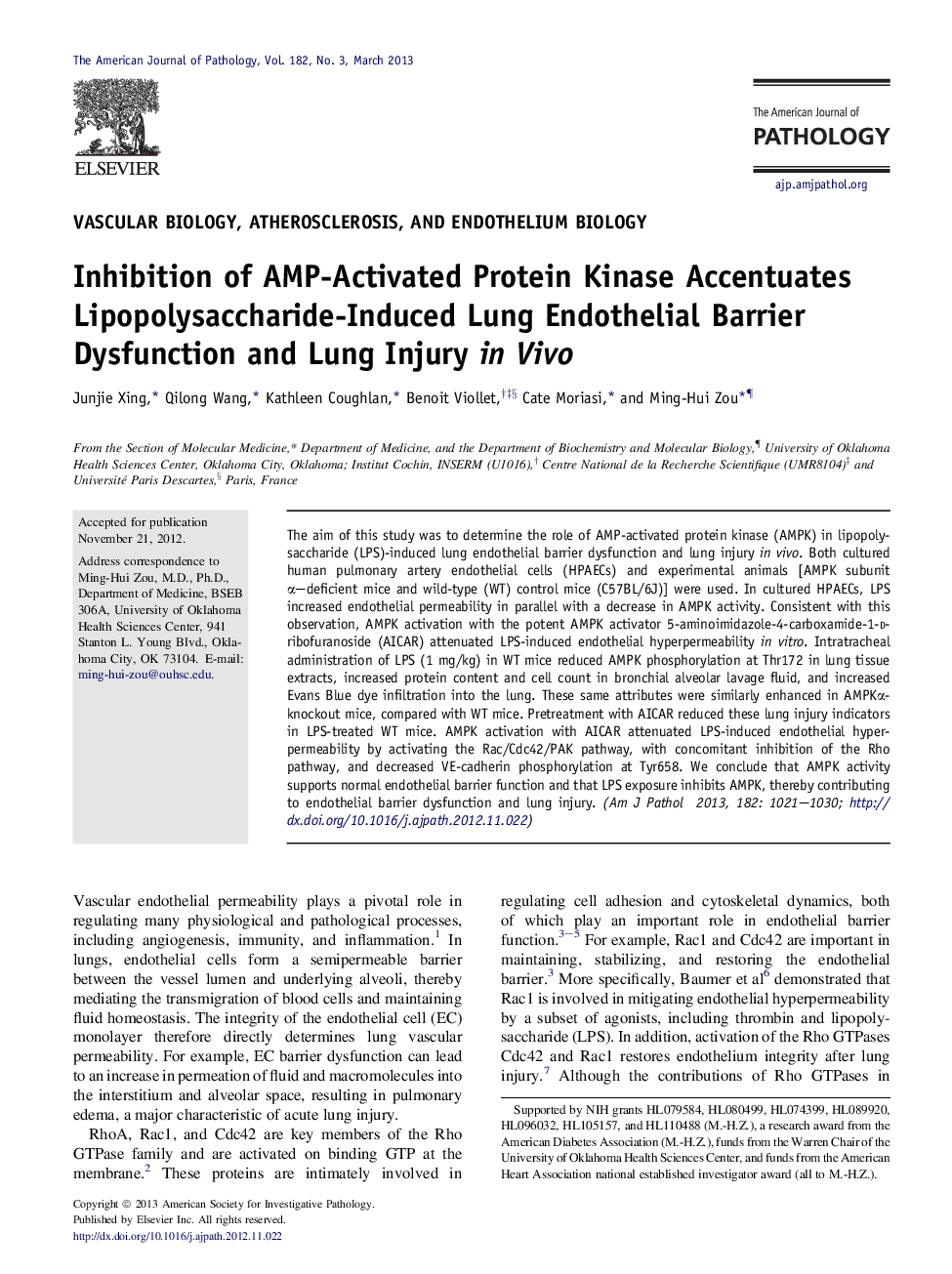| Article ID | Journal | Published Year | Pages | File Type |
|---|---|---|---|---|
| 5936939 | The American Journal of Pathology | 2013 | 10 Pages |
The aim of this study was to determine the role of AMP-activated protein kinase (AMPK) in lipopolysaccharide (LPS)-induced lung endothelial barrier dysfunction and lung injury in vivo. Both cultured human pulmonary artery endothelial cells (HPAECs) and experimental animals [AMPK subunit α-deficient mice and wild-type (WT) control mice (C57BL/6J)] were used. In cultured HPAECs, LPS increased endothelial permeability in parallel with a decrease in AMPK activity. Consistent with this observation, AMPK activation with the potent AMPK activator 5-aminoimidazole-4-carboxamide-1-d-ribofuranoside (AICAR) attenuated LPS-induced endothelial hyperpermeability in vitro. Intratracheal administration of LPS (1 mg/kg) in WT mice reduced AMPK phosphorylation at Thr172 in lung tissue extracts, increased protein content and cell count in bronchial alveolar lavage fluid, and increased Evans Blue dye infiltration into the lung. These same attributes were similarly enhanced in AMPKα-knockout mice, compared with WT mice. Pretreatment with AICAR reduced these lung injury indicators in LPS-treated WT mice. AMPK activation with AICAR attenuated LPS-induced endothelial hyperpermeability by activating the Rac/Cdc42/PAK pathway, with concomitant inhibition of the Rho pathway, and decreased VE-cadherin phosphorylation at Tyr658. We conclude that AMPK activity supports normal endothelial barrier function and that LPS exposure inhibits AMPK, thereby contributing to endothelial barrier dysfunction and lung injury.
